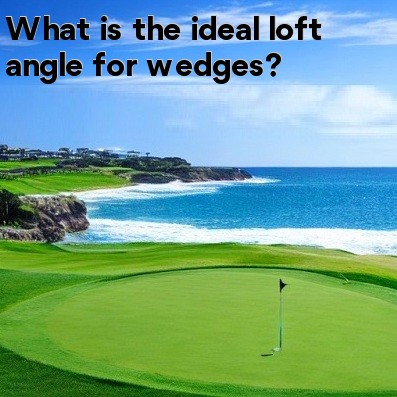
What is the Ideal Loft Angle for Wedges in Golf?
When it comes to golf wedges, the loft angle plays a crucial role in determining the trajectory and distance achieved with each shot. The loft angle refers to the angle between the clubface and the ground when the club is in the address position. The right loft angle for wedges can greatly improve your short game performance, enabling you to hit controlled, precise shots around the green. Let's delve deeper into the ideal loft angles for different wedges:
Gap Wedge (50-52 degrees)
The gap wedge typically has a loft angle of around 50 to 52 degrees. As the name suggests, this club helps bridge the gap between your pitching wedge and sand wedge. It is primarily used for approach shots from distances of around 90 to 110 yards. With this loft angle, the gap wedge allows golfers to achieve a moderately high trajectory and ample spin, making it easier to control the ball and stop it on the green.
Sand Wedge (54-56 degrees)
The sand wedge is specifically designed to help players get out of greenside bunkers and play shots from the sand. It usually has a loft angle ranging from 54 to 56 degrees, although variations exist. The higher loft angle of this club helps in producing a steep, descending trajectory, allowing the golf ball to escape the sand efficiently. The extra loft also aids in generating enough spin to control the ball's roll once it lands on the green.
Lob Wedge (58-64 degrees)
The lob wedge is the highest lofted club in a golfer's bag, typically ranging from 58 to 64 degrees. This club is commonly used for shots that require a high, soft landing, especially when faced with obstacles like bunkers, water hazards, or tight pin positions. The loft angle of a lob wedge helps in generating considerable backspin, allowing the ball to stop quickly after landing. It is a versatile club that can also be used for delicate chip shots and pitches around the green.
Choosing the Right Loft Angle
While the above loft angle ranges are considered standard, it's essential to note that the ideal loft angle for wedges may vary based on individual swing characteristics and playing conditions. Factors such as swing speed, angle of attack, and course conditions can influence the most suitable loft angle for an individual's wedges.
Working with a professional club fitter or golf instructor can help determine the correct loft angles for your wedges based on your unique swing and playing style. They can analyze factors like your angle of attack, launch angle, and ball flight to suggest the best loft angles that maximize your short game performance.
In conclusion, the ideal loft angle for wedges in golf depends on the specific club and its intended purpose. From the gap wedge to the sand wedge and the lob wedge, each club offers a different loft angle to cater to various shots and playing conditions. By understanding the loft angles of your wedges and how they impact your shots, you can make more informed decisions on the golf course and ultimately improve your short game.





